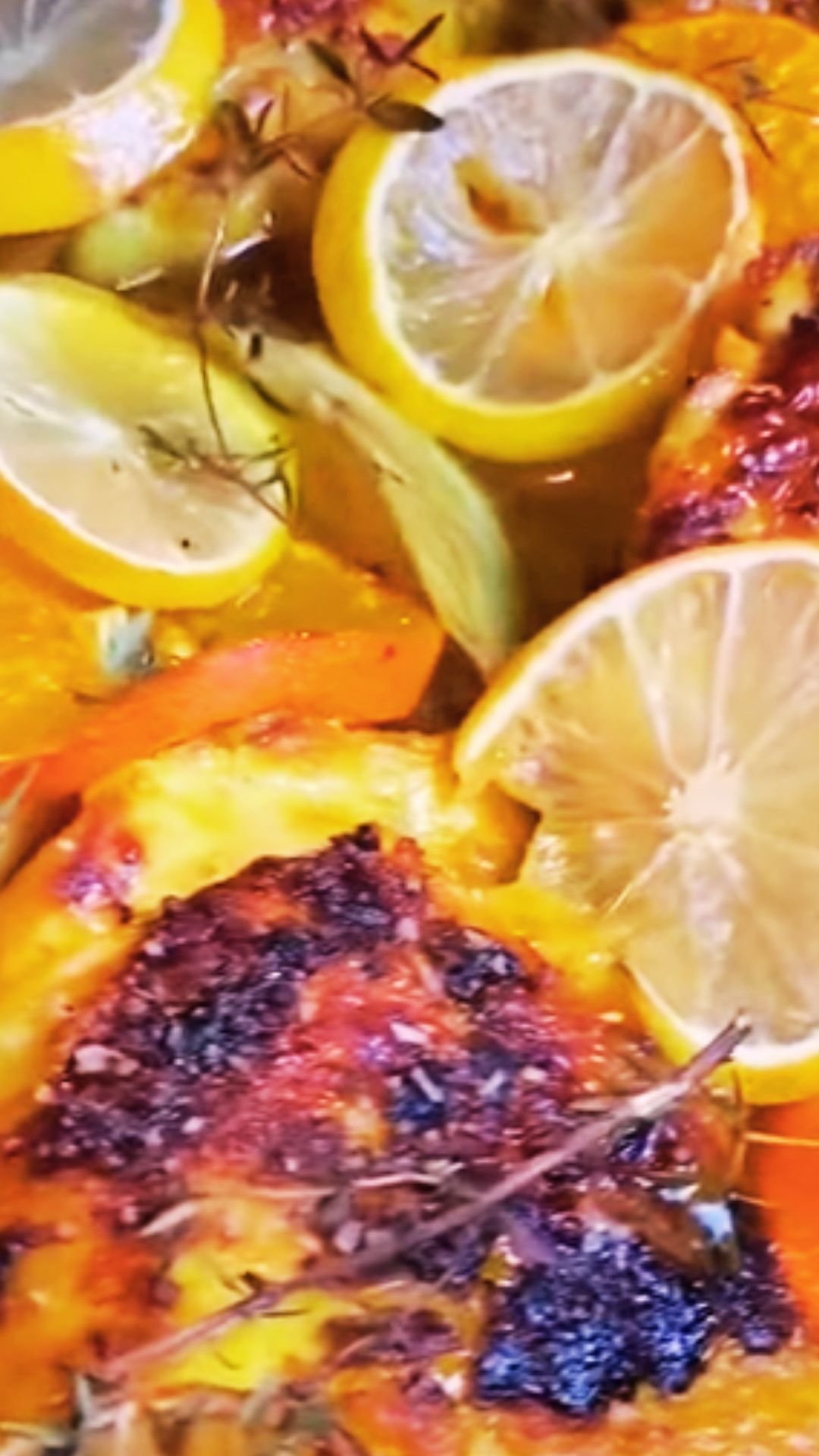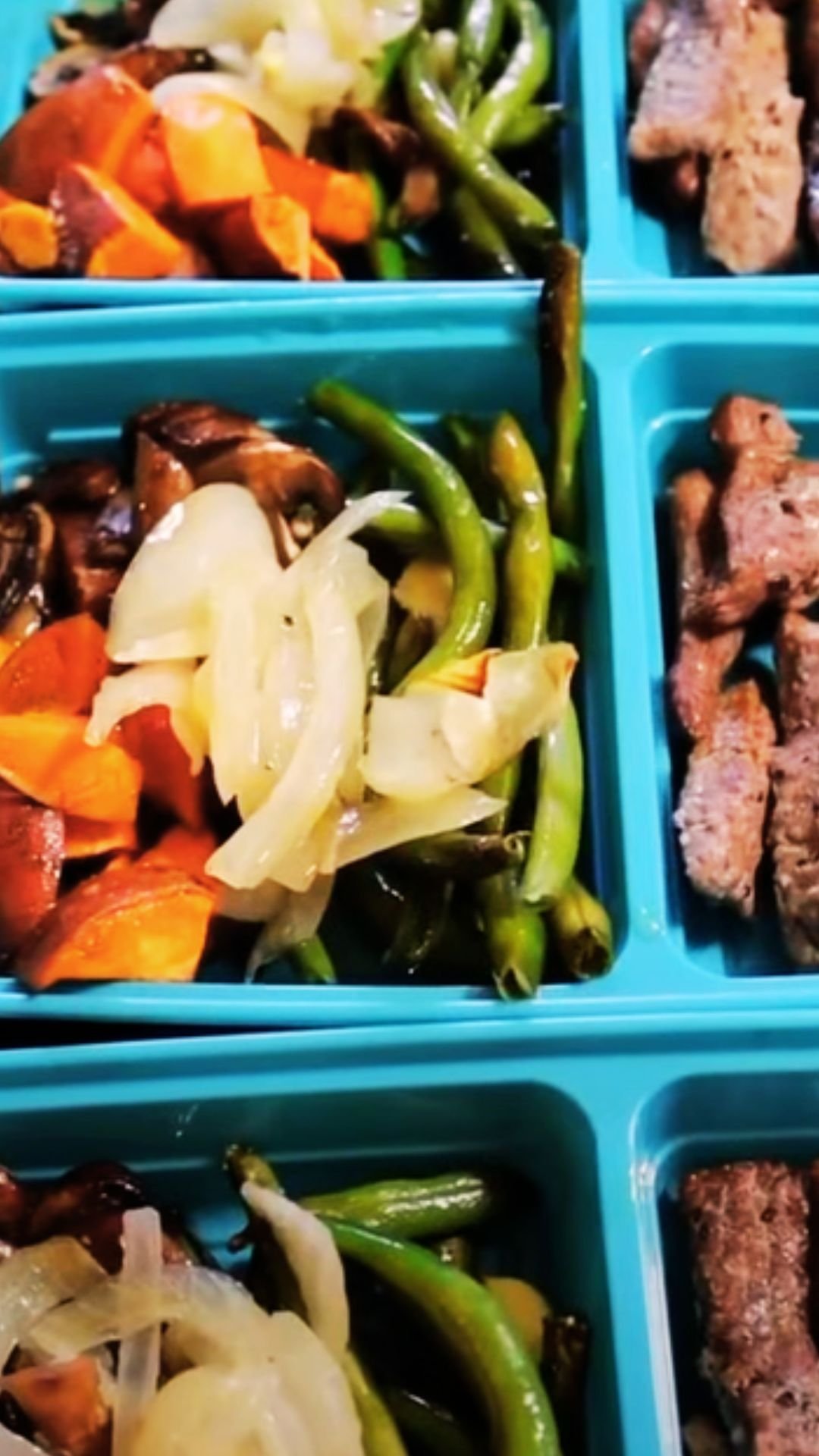There’s something magical about the aroma of roast chicken wafting through my kitchen, especially when it’s paired with the subtle licorice notes of fennel. I’ve been perfecting this roast chicken with fennel recipe for years, and I can confidently say it’s become one of my signature dishes that never fails to impress guests or satisfy my family’s dinner cravings.
This Mediterranean-inspired recipe transforms ordinary chicken into an extraordinary meal by combining the tender, juicy meat with fennel’s unique flavor profile. The fennel bulbs caramelize beautifully alongside the chicken, creating a harmony of flavors that’s both sophisticated and comforting. What I love most about this dish is how the fennel’s natural sweetness complements the savory chicken, while the herbs and aromatics tie everything together in perfect balance.
Understanding Your Ingredients
Before diving into the cooking process, I want to share some insights about the key ingredients that make this dish exceptional.
Fennel: This often-overlooked vegetable is the star alongside our chicken. Fresh fennel bulbs have a mild, sweet flavor with subtle anise notes that become even more pronounced when roasted. The fronds can be used as a garnish, adding both visual appeal and fresh flavor.
Chicken: I prefer using a whole chicken weighing between 3.5 to 4 pounds for this recipe. This size ensures even cooking while providing enough meat for a family of four to six people.
Herbs: Fresh thyme, rosemary, and sage create an aromatic blend that infuses the chicken with Mediterranean flavors. These hardy herbs hold up well to the high roasting temperature.
Aromatics: Lemon, garlic, and shallots provide the foundational flavors that penetrate both the chicken and fennel during roasting.
Essential Equipment and Preparation
Equipment Needed
| Item | Purpose | Alternative |
|---|---|---|
| Large roasting pan | Primary cooking vessel | Heavy-duty baking sheet with sides |
| Meat thermometer | Ensures proper doneness | Visual cues and timing |
| Sharp knife | Prep work and carving | Well-maintained kitchen knife |
| Cutting board | Safe prep surface | Large, stable work surface |
| Kitchen twine | Trussing chicken | Toothpicks for smaller adjustments |
| Basting brush | Applying oils and juices | Small spoon for basting |
Ingredient Preparation Timeline
I’ve found that proper preparation makes the cooking process much smoother. Here’s my preferred timeline:
2 Hours Before Cooking:
- Remove chicken from refrigerator to bring to room temperature
- Prepare herb mixture and aromatics
- Clean and slice fennel bulbs
1 Hour Before Cooking:
- Season chicken inside and out
- Arrange fennel in roasting pan
- Preheat oven to optimal temperature
30 Minutes Before Cooking:
- Final seasoning adjustments
- Truss chicken if desired
- Prepare basting liquid
The Complete Recipe
Ingredients
For the Chicken:
- 1 whole chicken (3.5-4 pounds), giblets removed
- 3 tablespoons olive oil, divided
- 2 teaspoons kosher salt
- 1 teaspoon freshly ground black pepper
- 1 teaspoon dried thyme
- 1 teaspoon dried rosemary
- 1/2 teaspoon dried sage
- 4 garlic cloves, minced
- 1 large lemon, halved
- 2 sprigs fresh thyme
- 2 sprigs fresh rosemary
For the Fennel:
- 3 large fennel bulbs, trimmed and cut into wedges
- 2 shallots, quartered
- 2 tablespoons olive oil
- 1 teaspoon kosher salt
- 1/2 teaspoon black pepper
- 1/4 cup white wine or chicken broth
- 2 tablespoons fresh lemon juice
For Finishing:
- 2 tablespoons butter
- 2 tablespoons fresh fennel fronds, chopped
- 1 tablespoon fresh parsley, chopped
- Additional lemon wedges for serving
Step-by-Step Instructions
Step 1: Prepare the Chicken I start by patting the chicken completely dry with paper towels. This crucial step ensures crispy skin, which is one of my favorite parts of roast chicken. Next, I mix 2 tablespoons of olive oil with minced garlic, creating a paste that I rub under and over the skin. The key is being gentle but thorough to avoid tearing the delicate skin.
Step 2: Season Generously My seasoning blend combines kosher salt, black pepper, thyme, rosemary, and sage. I season the cavity first, then massage the herb mixture all over the skin. Don’t be shy with the seasoning – chicken can handle generous amounts, and proper seasoning is what separates good roast chicken from great roast chicken.
Step 3: Stuff and Truss I stuff the cavity with lemon halves and fresh herb sprigs. This not only adds flavor from the inside out but also helps maintain the chicken’s shape during cooking. Trussing isn’t absolutely necessary, but I find it helps achieve more even cooking and a more attractive presentation.
Step 4: Prepare the Fennel While the chicken comes to room temperature, I prepare the fennel. I cut each bulb into 6-8 wedges, keeping some of the core intact so the wedges hold together during roasting. I toss the fennel wedges and shallot quarters with olive oil, salt, and pepper, then arrange them in my roasting pan.

Step 5: Initial Roasting I preheat my oven to 425°F (220°C) and place the seasoned chicken breast-side up on top of the fennel. The chicken should sit directly on the vegetables, which will serve as a natural roasting rack while absorbing the delicious drippings.
Step 6: First Roasting Phase I roast for 30 minutes at the high temperature to get the skin browning nicely. After this initial phase, I add the white wine or chicken broth to the pan, being careful to pour it around the fennel, not over the chicken.
Step 7: Continue Roasting I reduce the temperature to 375°F (190°C) and continue roasting for another 30-40 minutes. The internal temperature should reach 165°F (74°C) when measured at the thickest part of the thigh. I baste every 20 minutes with the pan juices to keep everything moist and flavorful.
Step 8: Rest and Finish Once cooked, I remove the chicken from the oven and let it rest for 10-15 minutes. This resting period allows the juices to redistribute throughout the meat. While it rests, I toss the roasted fennel with fresh lemon juice and check the seasoning.
Step 9: Final Touches Before serving, I add small pieces of butter to the hot fennel, which melts and creates a glossy finish. I garnish with fresh fennel fronds and parsley, then carve the chicken and serve everything together.
Cooking Times and Temperature Guide
Understanding proper cooking times and temperatures is crucial for success with this recipe. Here’s my comprehensive guide:
| Chicken Weight | Initial High Heat (425°F) | Reduced Heat (375°F) | Total Time | Internal Temp |
|---|---|---|---|---|
| 3-3.5 lbs | 25 minutes | 25-30 minutes | 50-55 minutes | 165°F |
| 3.5-4 lbs | 30 minutes | 30-35 minutes | 60-65 minutes | 165°F |
| 4-4.5 lbs | 30 minutes | 35-40 minutes | 65-70 minutes | 165°F |
| 4.5-5 lbs | 35 minutes | 40-45 minutes | 75-80 minutes | 165°F |
Visual Doneness Cues
Beyond temperature, I look for these visual indicators:
- Skin is golden brown and crispy
- Juices run clear when thigh is pierced
- Leg moves easily in socket when wiggled
- Fennel is caramelized and tender when pierced with a fork
Nutritional Information and Benefits
This roast chicken with fennel recipe isn’t just delicious – it’s also nutritious and well-balanced. Here’s the nutritional breakdown per serving (assuming 6 servings):
| Nutrient | Amount per Serving | % Daily Value |
|---|---|---|
| Calories | 385 | 19% |
| Protein | 42g | 84% |
| Fat | 18g | 28% |
| Carbohydrates | 12g | 4% |
| Fiber | 4g | 16% |
| Sodium | 680mg | 30% |
| Vitamin C | 15mg | 17% |
| Iron | 2.1mg | 12% |
| Potassium | 580mg | 12% |
Health Benefits
Chicken Benefits:
- High-quality protein for muscle maintenance and growth
- Rich in B vitamins, particularly niacin and B6
- Good source of selenium and phosphorus
- Relatively low in saturated fat when skin is removed
Fennel Benefits:
- Excellent source of vitamin C and folate
- Contains potassium for heart health
- Rich in fiber for digestive health
- Provides antioxidants and anti-inflammatory compounds
- May help with digestion and bloating
Variations and Adaptations
Over the years, I’ve experimented with numerous variations of this basic recipe. Here are some of my favorite adaptations:
Herb Variations
Mediterranean Blend: Add oregano, basil, and a pinch of red pepper flakes French-Inspired: Use herbes de Provence with lavender notes Italian Style: Incorporate fresh sage, rosemary, and lemon zest
Vegetable Additions
I often add other vegetables to the roasting pan:
- Baby potatoes, halved
- Carrots, cut into chunks
- Pearl onions, peeled
- Bell peppers, sliced
- Cherry tomatoes in the last 20 minutes
Citrus Variations
Instead of lemon, try:
- Orange segments and zest for sweetness
- Lime for a more tropical flavor
- Grapefruit for a unique bitter-sweet note
Cooking Method Adaptations
Slow Roasting: Cook at 325°F for a longer time for ultra-tender meat High-Heat Roasting: Start at 450°F for extra crispy skin Spatchcocked Version: Flatten the chicken for faster, more even cooking
Storage and Reheating Guidelines
Proper storage ensures you can enjoy leftovers safely and deliciously.
Storage Instructions
- Refrigerate within 2 hours of cooking
- Store chicken and fennel separately if possible
- Use within 3-4 days when refrigerated
- Freeze for up to 3 months in airtight containers
Reheating Methods
| Method | Temperature | Time | Best For |
|---|---|---|---|
| Oven | 325°F | 15-20 minutes | Whole pieces, maintaining texture |
| Microwave | Medium power | 2-3 minutes | Quick individual portions |
| Stovetop | Medium heat | 5-8 minutes | Shredded chicken in sauce |
| Air Fryer | 350°F | 5-7 minutes | Crisping skin |
Troubleshooting Common Issues
Even experienced cooks encounter challenges. Here are solutions to common problems I’ve encountered:
Dry Chicken
Causes: Overcooking, insufficient basting, chicken too cold when cooking started Solutions: Use meat thermometer, baste regularly, bring chicken to room temperature first
Soggy Skin
Causes: Not patting dry, too much liquid in pan, oven temperature too low Solutions: Thorough drying, minimal liquids, proper temperature control
Undercooked Fennel
Causes: Pieces too large, insufficient cooking time, overcrowded pan Solutions: Cut smaller wedges, extend cooking time, use larger pan
Burnt Skin Before Chicken Cooks
Causes: Oven too hot, rack position too high, excessive oil Solutions: Lower temperature, move rack down, tent with foil if needed
Serving Suggestions and Pairings
This roast chicken with fennel pairs beautifully with various sides and accompaniments:
Complementary Sides
- Creamy mashed potatoes to soak up the delicious pan juices
- Wild rice pilaf with herbs and almonds
- Roasted root vegetables for additional Mediterranean flavors
- Simple green salad with lemon vinaigrette
- Crusty bread for sopping up juices
Sauce Options
While this dish is delicious on its own, these sauces can elevate it further:
- Pan gravy made from the drippings
- Lemon herb butter
- Chimichurri for a fresh, bright contrast
- Garlic aioli for richness
Make-Ahead Components
- Fennel can be prepped and stored in the refrigerator for up to 2 days
- Herb mixture can be prepared up to 3 days ahead
- Chicken can be seasoned up to 24 hours in advance for deeper flavor penetration
Seasonal Adaptations
I love adapting this recipe throughout the year to take advantage of seasonal ingredients:
Spring Version
Add asparagus spears and fresh peas in the final 15 minutes of cooking. Incorporate fresh dill and chives for bright, spring flavors.
Summer Adaptation
Include zucchini, yellow squash, and cherry tomatoes. Finish with fresh basil and a squeeze of lime juice.
Fall Variation
Incorporate butternut squash, Brussels sprouts, and cranberries. Add sage and a touch of maple syrup to the fennel.
Winter Comfort
Root vegetables like parsnips, turnips, and sweet potatoes work beautifully. Add warming spices like cinnamon and nutmeg.
Questions and Answers
Q: Can I use chicken pieces instead of a whole chicken? I absolutely recommend using chicken pieces if that’s what you prefer! Thighs and drumsticks work particularly well with this recipe because they stay moist during the longer cooking time. Adjust the cooking time to about 35-45 minutes total, and ensure the internal temperature reaches 165°F. Chicken breasts can work too, but I’d add them to the pan 15-20 minutes after starting the thighs to prevent overcooking.
Q: What if I can’t find fresh fennel bulbs? While fresh fennel gives the best results, you can substitute with other vegetables that roast well. Try thick slices of sweet onion, halved Brussels sprouts, or even celery root cut into chunks. You won’t get the distinctive anise flavor, but you’ll still have a delicious roasted vegetable base. I don’t recommend using fennel seeds as a substitute since they won’t provide the same textural element.
Q: How do I know when the chicken is properly done without a thermometer? Although I strongly recommend using a meat thermometer, there are visual cues you can rely on. Pierce the thickest part of the thigh with a knife – the juices should run clear, not pink or red. The leg should move easily when you wiggle it at the joint. The skin should be golden brown and crispy. When you cut into the thigh meat, it should be white throughout with no pink areas.
Q: Can I prepare this dish ahead of time? You can do quite a bit of prep work ahead! I often season the chicken up to 24 hours in advance and store it covered in the refrigerator – this actually improves the flavor. The fennel can be cut and stored for up to 2 days ahead. However, I don’t recommend fully cooking the dish in advance, as reheated roast chicken never quite matches the texture of freshly roasted.
Q: Why does my fennel sometimes taste bitter? Fennel can develop a bitter taste if it’s overcooked or if you’re using older bulbs. Choose fresh, firm fennel bulbs without brown spots or wilted fronds. If your fennel seems particularly strong, you can blanch the cut pieces in boiling water for 2-3 minutes before roasting, which mellows the flavor. Also, make sure you’re removing any tough outer layers before cutting.
Q: Can I make this recipe in a smaller portion? Absolutely! You can use chicken pieces for smaller portions, or even game hens for individual servings. For a half-size recipe, use 2-3 chicken breasts or 4-6 thighs, reduce the fennel to 2 bulbs, and adjust the cooking time accordingly. The seasonings can be halved as well, though I often use slightly more than half to ensure good flavor development.
Q: What’s the best way to carve the chicken for serving? Let the chicken rest for at least 10 minutes after cooking – this is crucial for juicy meat. Start by removing the legs and thighs, cutting through the skin between the leg and body, then popping the joint to separate. Remove the wings next. For the breast meat, slice along one side of the breastbone, then cut downward in smooth strokes, following the curve of the ribcage. Slice the breast meat against the grain for the most tender pieces.
Q: Can I use this recipe for meal prep? This recipe works wonderfully for meal prep! The chicken and fennel both reheat well and maintain good flavor for 3-4 days in the refrigerator. I like to shred leftover chicken for salads, sandwiches, or grain bowls. The roasted fennel is delicious cold in salads or reheated as a side dish. Just store the components separately to maintain the best texture.
This roast chicken with fennel recipe has become a cornerstone of my cooking repertoire, and I hope it becomes one of yours too. The combination of tender, flavorful chicken with caramelized fennel creates a meal that’s both comforting and sophisticated. Whether you’re cooking for family dinner or entertaining guests, this dish delivers impressive results with straightforward techniques. The key is patience – letting the chicken come to room temperature, taking time to season properly, and allowing for adequate resting time after cooking. These small steps make all the difference in achieving restaurant-quality results at home.


